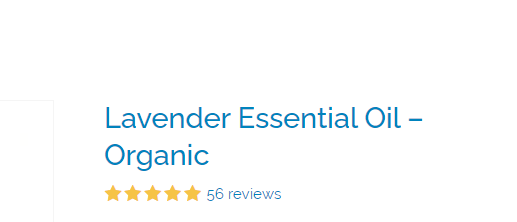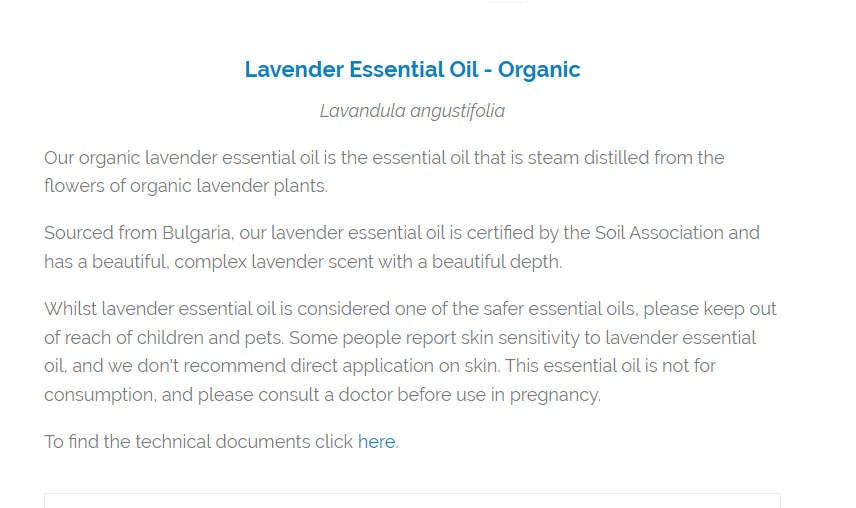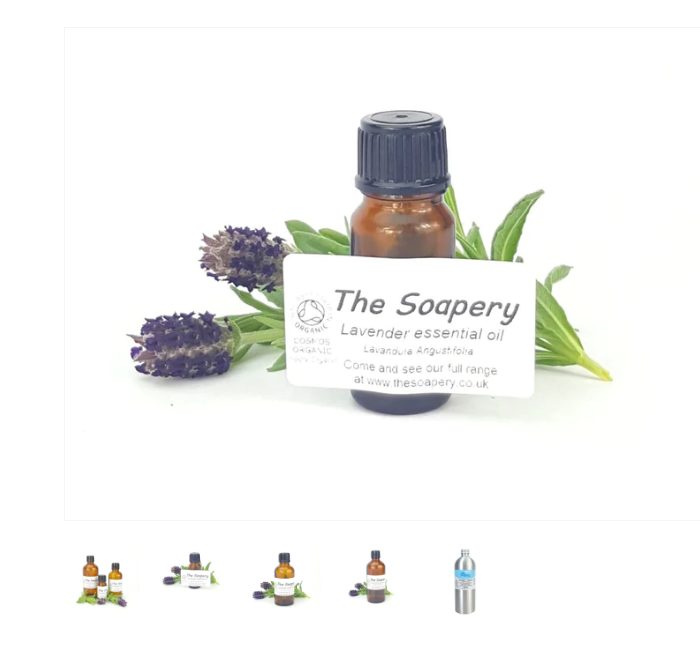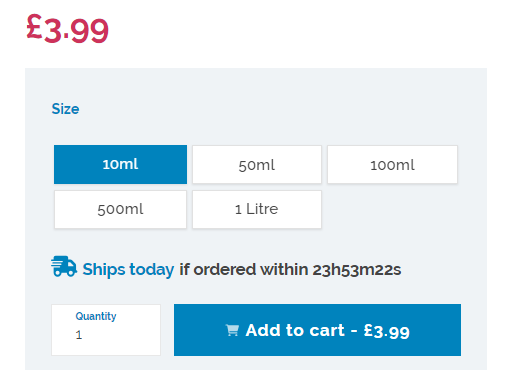
As an ecommerce site, product page optimisations are a great place to start with your SEO. It’s where you (or your team) can achieve a lot in a short amount of time, without having to rely on technical support.
In this post, we’re going to be unpacking the anatomy of a well-optimised product page, and how to get the most out of each individual field at your disposal.
The example we’re using comes from a Shopify-built website by The Soapery, a brand we discovered organically by searching for lavender essential oil (clearly they know their SEO!) — but it also draws on the expert-endorsed approach we take to our own SEO here at CREOATE.
But first, a quick reminder on how to find your product keyword(s):
Before we get into analysing the ideal input for each field of your product page, you’re going to need to have a keyword in mind for each one. A keyword is basically a term (one or a few words) both that people are searching, and also that represents your product.
We recommend using Google Keyword Planner (which is free) to find the most commonly searched version of your product by country. You can also try out tools like Moz Keyword Explorer and Ahrefs Keyword Generator which can give additional helpful information, like how difficult it will be to rank top for each keyword. Free access is limited for both.
1. A concise product title

From an SEO perspective, what we’re looking for from our product title is clarity and information related to the key search term (keyword) for this product. We found this page by searching the term ‘organic lavender oil’, and you can see it’s well-optimised for this search.
The title — ‘Lavender Essential Oil - Organic’ — is concise and relevant, and this appears again above the description.
2. A thorough product description

In the description itself, the term ‘lavender essential oil’ appears a number of times without ever feeling like it’s been shoehorned in — you never want your optimisation to feel or read as forced. Not only will this put your customers off, but it can actually work against you from an SEO perspective.
Our one criticism? We think this description could be more thorough. We recommended making your product descriptions at least 300 words long for SEO purposes, but also because this is generally what it takes to cover the product in the necessary detail.
Size, weight, dimensions, usage or care tips, FAQs… you need to make the most of this space, leaving no question unanswered. In this example, it’s likely that some of the content within the ‘technical documents’ could have been brought into the main description to strengthen it.
4 Tips for writing compelling product descriptions:
It’s important to have SEO-optimised product descriptions, but it’s equally important to write product descriptions that inform, engage, and ultimately sell! Here are our top tips:
- Know who you’re writing to. You know your customers best — you probably speak to at least one every single day! So be sure to hold them in mind as you start to write.
- Paint a picture. Your customer can’t hold your product in their hands before they buy it, so your description needs to fill in those sensory blanks.
- Be assertive. Ooze authority by cutting out words like ‘might’ and ‘could’, and always writing in the active voice (‘the cat sat on the mat’, rather than ‘the mat was sat on by the cat’).
- Harness the power of social proof. Has your product won any awards? Is it a bestseller? Has someone famous worn/used it? These are all examples of ‘social proof’, which is a powerful conversion tactic — be sure to make the most of it!
📚 Bookmark this for later: How to Write Effective Product Descriptions
3. Plenty of images & optimised alt tags

Shopify caps you at nine images per product, which we think is about the right number to use from an SEO and user experience perspective. A simple product may only need one or two images, but offering as many angles and close ups as possible can only be a good thing.
📚 Bookmark this for later: 8 Product Photography Tips
You can even use keywords to optimise your images. When you upload images to the backend of your ecommerce site, you should be prompted to enter what’s called an ‘alt tag’, or it might simply be called an ‘image description’, depending on your ecommerce platform.
This is meant to be a basic description of what the image is — both so that Google’s bots can interpret it quickly, and so that screen readers can describe the image to those using it (who are likely to be visually impaired).

If we dig quickly into the code here, we can see that The Soapery has used keyword optimised alt tags such as ‘Organic Lavender Oil — Certified Organic’. And, crucially, they’ve written a different alt tag for each image so this doesn’t look too forced or shady.
4. Displaying customer reviews

Having reviews under your product is great too (provided they’re mostly positive!). It shows that people have successfully bought, used and enjoyed your product — a really strong signal to Google that this is a trustworthy brand and product to promote highly in its rankings.
When the correct ‘review schema’ code is added (again, this should be in place automatically for most platforms), the star review may also pull through to the search engine results page. This can increase your click through rate, so the percentage of people who choose to click through to your
5. A clear price & call to action

A clear price, and a clear call to action makes it clear that this is a page where you can actually buy a product, rather than just read about one. And like the star reviews, when this is coded correctly, the price should also pull through to the search results.
6. Making the most of meta information

Let’s head back to the search results page that led us here. This written content is called the meta information, and it’s something you can set for each page on your website.
Try to make this different from page to page to avoid ‘content duplication’, which Google can frown upon.
Meta title character count: 50-65*
Meta description character count: 150-160*
* Where exactly the meta info is cut off varies a bit by device and character shape, which is why there’s a best practice ‘range’ rather than a fixed number.
For your meta title, you want to front load your main keyword, getting it right there at the beginning. And for the rest of your 50-65 character count, you can add some intrigue, some FOMO, slip in a key benefit, or keep it simple with your brand name.
So you might go with:
Lavender Essential Oil | 100% Organic
Lavender Essential Oil | Free UK Shipping
Lavender Essential Oil | The Soapery
For your meta description, there’s no pressure to get the keyword in early on, but you should aim to include it somewhere in the description. Use this space to sell your product and your brand in as concise a way as possible; your meta title catches attention, and your meta description needs to give people a reason to click through to your product page, rather than another one in the search results.
Looking for more SEO advice?
From on-page optimisation to technical corrections, building backlinks to creating content, SEO is a broad (and important!) topic.
The product page optimisations we’ve covered above are a great place to get started, but take a look at our other existing SEO guides to help you understand where to channel your energy next.
📚 Bookmark these for later:








